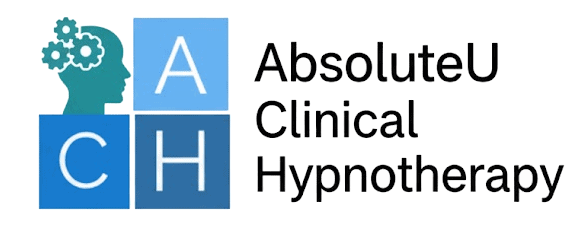Understanding What SAD Really Is
Understanding how to recover from SAD begins with recognising that Seasonal Affective Disorder is a form of depression linked to changes in light exposure. It most often appears in the autumn and winter months when sunlight becomes limited. This reduction in light affects the brain’s production of serotonin and melatonin, two chemicals that regulate mood and sleep. When these levels drop, you may start to feel low, lethargic, or disconnected from your usual sense of motivation.
Typical symptoms include:
- Persistent sadness or tearfulness
- Sleeping longer but still feeling tired
- Craving carbohydrates and gaining weight
- Losing interest in hobbies or social contact
- Feeling anxious, distracted, or easily irritated
- Struggling to concentrate or complete tasks

Recognising these signs is the first step in beginning to recover from SAD. Once you understand how light and mood interact, you can start to make simple but effective changes that support wellbeing.
Why Light Affects Mood
The human body is naturally responsive to light. Sunlight helps regulate the body’s internal clock, influences hormone release, and plays a key role in maintaining stable moods. During the winter, shorter days and darker mornings can disturb this rhythm, making it harder to wake up, stay alert, or feel motivated.
Reduced light exposure means less serotonin and vitamin D, both of which are essential for feeling balanced and positive. For many people, simply understanding this link provides reassurance that their low mood has a biological cause and is something they can address. Once you begin to take small, consistent actions, you can gently recover from SAD and restore a sense of clarity and motivation.
How Therapy Helps You Recover from SAD
Therapy provides a practical and emotional pathway to overcome Seasonal Affective Disorder. At AbsoluteU, I use an integrated combination of Hypnotherapy, CBT, and NLP to help clients recover from SAD and maintain resilience throughout the year.
- Hypnotherapy – works with the subconscious mind to create calm, focus, and new emotional patterns. In this relaxed state, your mind becomes open to positive suggestions and begins to form new associations with the winter months.
- CBT (Cognitive Behavioural Therapy) – helps identify and challenge the thought patterns that keep low mood in place. By replacing them with more balanced and realistic thinking, you begin to feel more in control.
- NLP (Neuro Linguistic Programming) – focuses on internal language and visualisation. By changing how you describe your experiences to yourself, you alter the way they affect you emotionally.
Together, these methods create a supportive structure to help you recover from SAD, not only by managing symptoms but by transforming how your mind responds to seasonal change.
Small Daily Steps
Recovery from Seasonal Affective Disorder is built on small, repeatable actions that signal safety and stability to your brain. Light, movement, nutrition, and rest all play a part in helping you recover from SAD more smoothly.
Try to:
- Spend time outside whenever possible, even on cloudy days
- Sit near windows to increase natural light exposure
- Use warm-toned lamps or daylight bulbs in your home
- Eat nourishing foods and maintain steady hydration
- Keep a consistent bedtime and waking routine
- Move your body gently through walking, stretching, or dancing
- Laugh, listen to music, or connect with people who lift your spirits
Each of these activities releases positive chemicals such as serotonin and dopamine. Over time, they re-train your body and mind to respond to the season with greater calm and vitality.
Releasing Feel-good Chemistry
Your brain has the remarkable ability to change how you feel by adjusting the chemicals it releases. Activities that bring joy, exercise, or even small moments of gratitude can prompt your body to produce more of these natural mood enhancers.
During therapy sessions, I teach clients specific techniques that help them release these chemicals deliberately. This includes deep breathing, mindfulness, visualisation, and self-hypnosis. Once you experience how easily your body can shift from tension to calm, you begin to see that it really is possible to recover from SAD from within.
Creating an Anchor for Positivity
Anchoring is a simple but powerful tool drawn from NLP that helps you access positive emotions when you need them most. The process involves linking a physical gesture, such as gently pressing your thumb and finger together, to a memory or feeling that represents strength, calm, or happiness.
Repeating this technique while visualising positive experiences trains your mind to associate the gesture with those emotions. Later, when you use that same gesture, your brain automatically recalls the positive state. This technique can be a valuable tool to help you recover from SAD, giving you a quick and reliable way to lift your mood when darkness or fatigue begins to take hold.
Supporting Mind and Body Together
The connection between physical and mental wellbeing is inseparable. To recover from SAD, both must be cared for simultaneously. Gentle physical activity increases blood flow to the brain, supporting better concentration and energy. Balanced nutrition stabilises mood and prevents sugar-related crashes. Quality sleep helps regulate the hormones responsible for mood and stress response.
Social contact is equally important. Isolation can amplify negative thoughts, while spending time with friends or family releases oxytocin, a chemical linked with trust and bonding. Even short conversations or laughter with others can help restore perspective and positivity.
When to Seek Extra Help
If your symptoms of low mood continue for several weeks or begin to interfere with daily life, it may be time to seek professional support. Speaking to your GP is an excellent first step, as they can rule out physical causes and suggest appropriate treatment options.
Therapy offers a safe and confidential space to understand yourself and learn coping strategies. Clients who begin therapy often find that they not only recover from SAD, but also gain valuable tools to manage stress, anxiety, and future challenges in life.
A Season for Growth
Recovering from Seasonal Affective Disorder is not simply about waiting for spring. It is about learning to adapt, create light within, and find meaning in the quieter months. Each time you take a small step towards wellbeing, you strengthen your ability to manage your emotions and trust your resilience.
At AbsoluteU Clinical Hypnotherapy, I help clients discover that it is possible to recover from SAD and find balance again. Through understanding, therapeutic guidance, and daily self-care, you can bring warmth back into winter and rediscover a sense of peace and purpose.
If you are ready to take that first step, reach out today. Together we can help you recover from SAD, find your energy again, and remember that even in the darkest season, light is always closer than you think.


